
Gerrit Rietveld was a Dutch furniture designer and architect.
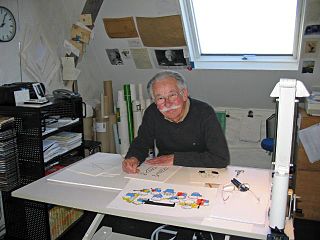
Dick Bruna was a Dutch author, artist, illustrator and graphic designer.

Utrecht is the fourth-largest city of the Netherlands, as well as the capital and the most populous city of the province of Utrecht. The municipality of Utrecht is located in the eastern part of the Randstad conurbation, in the very centre of mainland Netherlands, and includes Haarzuilens, Vleuten en De Meern. It has a population of 361,699 as of December 2021.

Amersfoort is a city and municipality in the province of Utrecht, Netherlands. As of 31 January 2023, the municipality had a population of 160,902, making it the second-largest of the province and fifteenth-largest of the country. Amersfoort is also one of the largest Dutch railway junctions with its three stations—Amersfoort Centraal, Schothorst and Vathorst—due to its location on two of the Netherlands' main east to west and north to south railway lines. The city was used during the 1928 Summer Olympics as a venue for the modern pentathlon events. Amersfoort marked its 750th anniversary as a city in 2009.
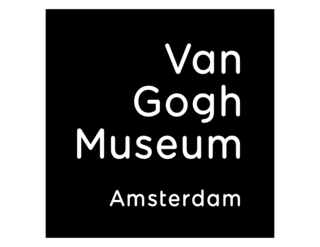
The Van Gogh Museum is a Dutch art museum dedicated to the works of Vincent van Gogh and his contemporaries in the Museum Square in Amsterdam South, close to the Stedelijk Museum, the Rijksmuseum, and the Concertgebouw. The museum opened on 2 June 1973, and its buildings were designed by Gerrit Rietveld and Kisho Kurokawa.

De Stijl, also known as Neoplasticism, was a Dutch art movement founded in 1917 in Leiden. De Stijl consisted of artists and architects. In a more narrow sense, the term De Stijl is used to refer to a body of work from 1917 to 1931 founded in the Netherlands. Proponents of De Stijl advocated pure abstraction and universality by a reduction to the essentials of form and colour. They simplified visual compositions to vertical and horizontal, using only black, white and primary colors.
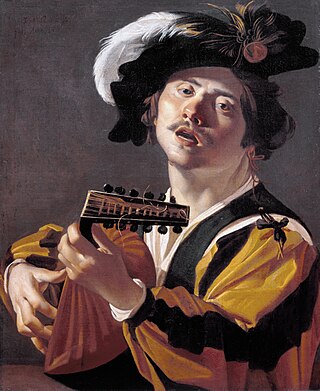
Dirck Jaspersz. van Baburen was a Dutch painter and one of the Utrecht Caravaggisti.

Abraham Bloemaert was a Dutch painter and printmaker who used etching and engraving. He initially worked in the style of the "Haarlem Mannerists", but by the beginning of the 17th-century altered his style in line with the new Baroque style that was then developing. He mostly painted history subjects and some landscapes. He was an important teacher, who trained most of the Utrecht Caravaggisti.

The Rietveld Schröder House in Utrecht was built in 1924 by Dutch architect Gerrit Rietveld for Mrs. Truus Schröder-Schräder and her three children.
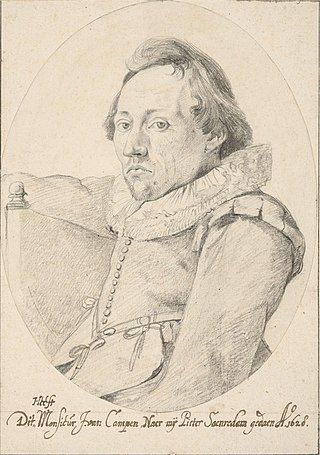
Pieter Jansz. Saenredam was a painter of the Dutch Golden Age, known for his distinctive paintings of whitewashed church interiors such as Interior of St Bavo's Church in Haarlem (1636) and Interior of the Sint-Odulphuskerk in Assendelft.

Hendrick Jansz ter Brugghen was a Dutch painter of genre scenes and religious subjects. He was one of the Dutch followers of Caravaggio – the so-called Utrecht Caravaggisti. Along with Gerrit van Hondhorst and Dirck van Baburen, Ter Brugghen was one of the most important Dutch painters to have been influenced by Caravaggio.
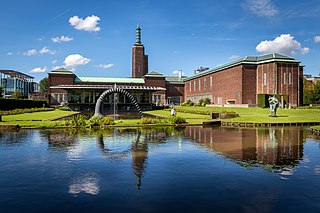
Municipal Museum Boijmans Van Beuningen is an art museum in Rotterdam in the Netherlands. The name of the museum is derived from the two most important collectors of Frans Jacob Otto Boijmans and Daniël George van Beuningen. It is located at the Museumpark in the district Rotterdam Centrum, close to the Kunsthal and the Natural History Museum.

Dutch Golden Age painting is the painting of the Dutch Golden Age, a period in Dutch history roughly spanning the 17th century, during and after the later part of the Eighty Years' War (1568–1648) for Dutch independence.

Roelant Savery was a Flanders-born Dutch Golden Age painter.

Dutch art describes the history of visual arts in the Netherlands, after the United Provinces separated from Flanders. Earlier painting in the area is covered in Early Netherlandish painting and Dutch and Flemish Renaissance painting.

Joachim Anthoniszoon Wtewael was a Dutch Mannerist painter and draughtsman, as well as a highly successful flax merchant, and town councillor of Utrecht. Wtewael was one of the leading Dutch exponents of Northern Mannerism, and his distinctive and attractive style remained largely untouched by the naturalistic developments happening around him, "characterized by masterfully drawn, highly polished figures often set in capricious poses". Wtewael was trained in the style of late 16th-century Haarlem Mannerism and remained essentially faithful to it, despite painting well into the early period of Dutch Golden Age painting.

Paulus Moreelse was a Dutch painter, mainly of portraits.

The Museum Catharijneconvent is a museum of religious art in Utrecht, Netherlands. It is located in the former St. Catharine convent, having been sited there since 1979. Its collections include many artifacts from the museum of religious art of the Catholic Archbishopric of Utrecht, located in the convent until 1979. In 2006 the convent closed for restoration. It is part of the Utrecht Museum Night.

Gijs Bakker is a Dutch jewellery and industrial-designer, educated at the Gerrit Rietveld Academie in Amsterdam, the Netherlands and the Konstfackskolan in Stockholm, Sweden.

The auricular style or lobate style is a style of ornamental decoration, mainly found in Northern Europe in the first half of the 17th century, bridging Northern Mannerism and the Baroque. The style was especially important and effective in silversmithing, but was also used in minor architectural ornamentation such as door and window reveals, picture frames, and a wide variety of the decorative arts. It uses softly flowing abstract shapes in relief, sometimes asymmetrical, whose resemblance to the side view of the human ear gives it its name, or at least its "undulating, slithery and boneless forms occasionally carry a suggestion of the inside of an ear or a conch shell". It is often associated with stylized marine animal forms, or ambiguous masks and shapes that might be such, which seem to emerge from the rippling, fluid background, as if the silver remained in its molten state.






















